- Anatomy of a Reliable Industrial Hose System
- Mistake #1 – Choosing the Wrong Hose for the Job
- Mistake #2 – Overlooking Fitting Compatibility and Thread Type
- Mistake #3 – Poor Hose Length Planning and Routing Layouts
- Mistake #4 – Inconsistent Crimping and Assembly Practices
- Mistake #5 – Ignoring Pressure, Temperature, and Flow Ratings
- Mistake #6 – Neglecting Preventive Maintenance and Inspection
- The Manufacturer’s Role: Ensuring Safe, Compliant Hose Assemblies
- Smarter Hose Assembly Practices for Long-Term System Reliability
Industrial hose assembly systems are the lifelines of modern fluid-handling operations, enabling the safe and efficient transfer of abrasive slurries, corrosive chemicals, and volatile fuels across demanding environments. In sectors where precision matters, whether dredging channels, fueling offshore rigs, or processing critical compounds, the reliability of every hose, fitting, and crimp determines far more than flow rate. It governs safety, efficiency, and regulatory compliance. A single weak connection or incompatible coupling can trigger leaks, contamination, and shutdowns that escalate into costly operational or environmental crises.
When an industrial hose assembly fails, the consequences extend well beyond the cost of replacement. Production halts, safety risks multiply, and non-compliance penalties can mount quickly. These disruptions ripple through project timelines, reducing efficiency and profitability.
Precision in every industrial hose assembly stage, from material selection to crimping and inspection, ensures durability and return on investment. Partnering with a proven industrial hose manufacturer like Anaconda Pipe & Hose guarantees assemblies designed for specific operating conditions, pressure ranges, and environmental demands. Through stringent testing and quality control, Anaconda delivers assemblies that minimize failures, extend service life, and safeguard productivity. In high-pressure industries, a reliable assembly isn’t just a component—it’s a cornerstone of safety and long-term operational success.
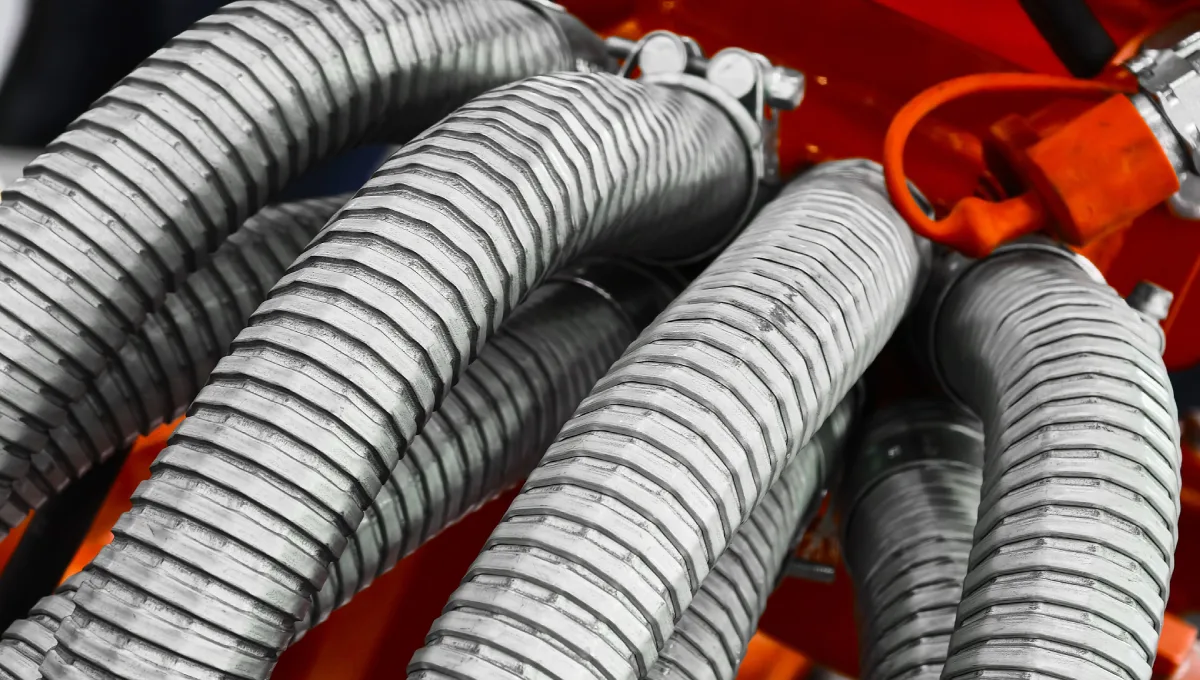
Anatomy of a Reliable Industrial Hose System
Every industrial hose assembly relies on the precise integration of its key components—the hose, couplings, fittings, ferrules, and crimp sleeves. Each element contributes to the system’s overall reliability by maintaining pressure, preventing leaks, and ensuring smooth, uninterrupted fluid transfer in demanding environments. The hose provides flexibility and abrasion resistance, while couplings and fittings offer the mechanical strength required to contain pressure and withstand vibration. Ferrules and crimp sleeves lock these parts together, transforming individual components into a unified, high-performance industrial hose assembly system.
Material compatibility is the foundation of performance. Selecting the wrong hose or fitting for a particular medium or environment can lead to rapid deterioration or even catastrophic failure. For example, mild-steel fittings corrode quickly in marine environments, while a nitrile hose designed for oil transfer will degrade when exposed to harsh chemicals. Ensuring component compatibility guarantees longevity, operational safety, and system efficiency.
An experienced industrial hose manufacturer such as Anaconda Pipe & Hose subjects each industrial hose assembly to hydrostatic, vacuum, and impulse testing while adhering to strict ISO 9001 standards. These quality protocols confirm that every product performs safely within rated pressure and temperature limits, providing customers with confidence, global compliance, and exceptional long-term value.
Mistake #1 – Choosing the Wrong Hose for the Job
Selecting the wrong industrial hose assembly for a specific operation is one of the most common and costly mistakes in industrial fluid management. When the hose material and the conveyed media are incompatible, failure is not a matter of if but when. Issues such as chemical corrosion, abrasive wear, or thermal breakdown frequently result from this mismatch, compromising both safety and operational efficiency. These oversights can lead to equipment damage, downtime, and, in severe cases, environmental contamination or safety incidents.
In demanding environments such as slurry handling, using an underspecified hose can rapidly erode the inner lining and reduce flow efficiency. In oil and fuel transfer, hoses not designed for hydrocarbon exposure may soften, blister, or delaminate. Similarly, steam transfer applications demand temperature-rated hoses; without them, the industrial hose assembly may fail catastrophically. Each of these scenarios results in costly repairs, lost production, and potential regulatory consequences.
A reputable industrial hose manufacturer evaluates temperature, pressure, media properties, and environmental conditions before recommending an assembly. Procurement specialists and engineers must verify these parameters to ensure that each industrial hose assembly is correctly specified for its duty cycle. Selecting the proper hose from the outset reduces maintenance costs, prevents downtime, and enhances system longevity, protecting both personnel and long-term capital investments.
Mistake #2 – Overlooking Fitting Compatibility and Thread Type
Even when the correct hose is selected, overall system reliability can still be undermined by incompatible fittings or coupling materials. A carefully engineered industrial hose assembly may fail prematurely if threads, sealing surfaces, or torque values are mismatched with system specifications. Cross-threading, overtightening, or misalignment can produce minor leaks that evolve into dangerous bursts, leading to safety incidents, costly repairs, and extended downtime. Every industrial hose assembly must therefore be verified for dimensional accuracy and material compatibility before installation.
Thread standards such as NPT, BSP, and flanged connections are common in industrial environments, but they are not interchangeable. Using the wrong standard can create micro-gaps that compromise sealing integrity or deform threads under load. The correct configuration depends on factors such as fluid type, system pressure, and regional standards—all of which determine long-term durability, performance, and compliance.
A trusted industrial hose manufacturer like Anaconda Pipe & Hose ensures precision through verified measurements, torque testing, and material validation for every fitting and coupling. When technicians adhere to certified assembly procedures, each industrial hose assembly remains leak-free, pressure-stable, and safe under the most demanding operating conditions. This precision-driven approach extends service life, reduces maintenance costs, and safeguards operational continuity across mining, oil and gas, and marine construction sectors.
Mistake #3 – Poor Hose Length Planning and Routing Layouts
An industrial hose assembly can experience unnecessary stress from poor routing and incorrect hose length, both of which shorten its lifespan and increase the likelihood of leaks or bursts. Hoses that are too short may stretch and strain at the fittings, while those that are too long can kink, twist, or rub against surrounding equipment. These issues accelerate fatigue, reduce flow efficiency, and compromise overall safety in demanding industrial environments.
Maintaining structural integrity begins with following the minimum bend radius guidelines set by the industrial hose manufacturer. When a hose bends beyond this limit, its inner liner can collapse, restricting flow and creating dangerous pressure spikes. Likewise, routing a hose near heat sources or areas of high vibration accelerates wear, thermal degradation, and premature failure.
A well-engineered layout accounts for motion, vibration, and temperature fluctuations. Incorporating clamps, flexible supports, and protective sleeves minimizes external stress and contact damage. When designed according to specifications from a reputable industrial hose manufacturer, each industrial hose assembly performs within its mechanical limits, ensuring safe, efficient, and reliable operation. Across mining, dredging, and oil and gas applications, precision routing and proper installation practices help every industrial hose assembly deliver maximum uptime, safety, and long-term return on investment.
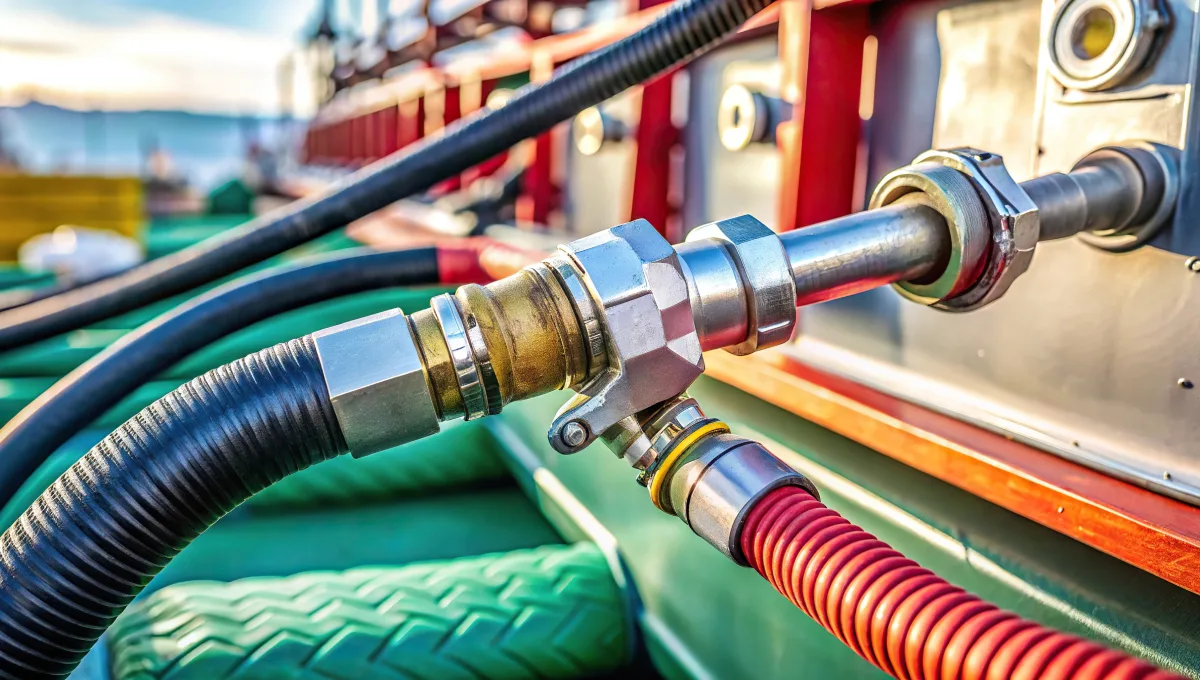
Mistake #4 – Inconsistent Crimping and Assembly Practices
Crimping is the most crucial process for ensuring the safety and longevity of an industrial hose assembly. Even slight inconsistencies in ferrule selection, crimp diameter, or tool calibration can result in catastrophic failure under pressure. A crimp that is too tight can crush the reinforcement layers within the hose, while one that is too loose may allow fittings to detach during use. These variations compromise pressure retention, leading to leaks, bursts, and potentially severe safety incidents.
To guarantee accuracy, professional crimping demands skilled technicians, calibrated machinery, and exact measurements. A reliable industrial hose manufacturer routinely inspects fittings for dimensional precision within microns and verifies crimping tools for consistent performance. By ensuring proper compression and uniform sealing strength, these checks preserve the system’s pressure integrity and operational reliability.
At Anaconda Pipe & Hose, every industrial hose assembly undergoes controlled crimping, pressure testing, and visual inspection before shipment. Each assembly is verified to meet its design tolerances and performance requirements. As a leading industrial hose manufacturer, Anaconda delivers products ready to withstand the harshest industrial conditions from dredging and mining to oil and gas operations, ensuring long-term safety, reduced maintenance costs, and dependable system performance across all heavy-duty applications.
Mistake #5 – Ignoring Pressure, Temperature, and Flow Ratings
Many system failures occur because operators misunderstand or misapply pressure ratings. A hose labeled “600 PSI” is not meant for continuous operation at that level sustained use near maximum capacity greatly shortens its service life. Each industrial hose assembly must include a sufficient safety margin to handle dynamic loads, startup surges, and fluctuating operating conditions. Without this precaution, even a premium product can fail prematurely from fatigue, vibration, or sudden impact. Proper awareness of ratings ensures every industrial hose assembly performs safely within its designed parameters, protecting personnel and equipment alike.
Temperature adds another layer of complexity. As heat increases, the working pressure rating of a hose often declines more than operators expect. Pressure surges during pump startups or reversals can temporarily exceed these limits, leading to structural damage, leaks, or catastrophic rupture. The results can be costly, causing production downtime, safety hazards, or environmental damage.
A dependable industrial hose manufacturer defines real-world performance through hydrostatic, burst, and impulse testing, setting conservative safety margins that engineers can trust. By leveraging this data, systems can be designed for maximum reliability and efficiency. Partnering with a proven industrial hose manufacturer ensures consistent quality, longer service life, and measurable ROI across all high-pressure industrial applications.
Mistake #6 – Neglecting Preventive Maintenance and Inspection
Even the most durable industrial hose assembly has a finite lifespan. Continuous exposure to vibration, pressure fluctuations, and corrosive chemicals gradually weakens its internal reinforcement and outer layers. Without scheduled inspections, small issues such as cracks, bulges, or leaks can escalate into serious failures that threaten safety, disrupt production, and increase operational costs. Routine evaluation of every industrial hose assembly is therefore essential to maintain system integrity and protect both equipment and personnel in demanding industrial environments.
A trusted industrial hose manufacturer provides comprehensive inspection guidelines, detailing how to identify signs of abrasion, blistering, loose fittings, or corrosion. Couplings and clamps should be checked for misalignment and wear, while hydrostatic and continuity tests verify that each hose continues to meet rated performance parameters. These tests confirm that the assembly can safely manage the required pressure, temperature, and flow conditions under real-world loads.
Preventive maintenance does more than prevent failures; it enhances equipment longevity and overall cost efficiency. By combining predictive tracking of service hours, environmental conditions, and media type with regular inspections, teams can optimize replacement intervals. Working with a reputable industrial hose manufacturer ensures proper maintenance strategies that reduce downtime, increase ROI, and sustain reliability across mining, oil and gas, and heavy industrial operations.
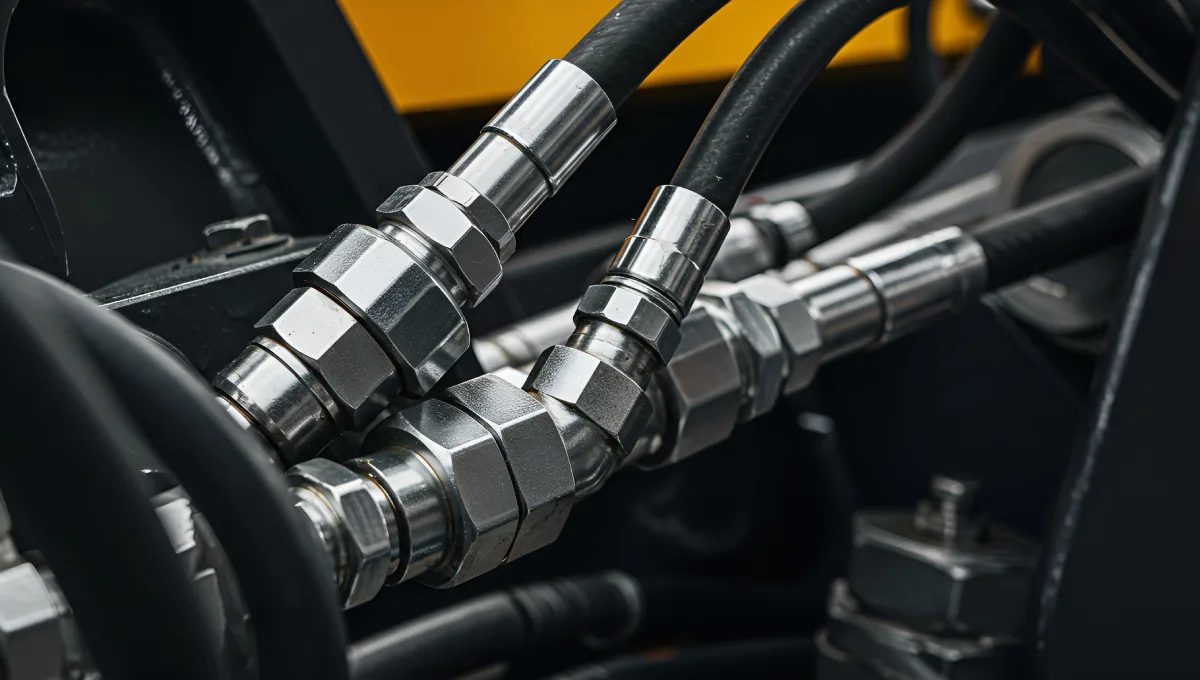
The Manufacturer’s Role: Ensuring Safe, Compliant Hose Assemblies
A certified industrial hose manufacturer plays a vital role in eliminating costly assembly errors and maintaining consistent product quality. From initial consultation and design to final performance validation, the manufacturer’s technical expertise ensures that every industrial hose assembly meets rigorous standards for safety, durability, and compliance. This attention to detail extends beyond production; it includes material certification, torque verification, and full documentation, ensuring each component performs reliably in demanding industrial environments.
At Anaconda Pipe & Hose, each industrial hose undergoes hydrostatic, impulse, and visual testing to confirm structural integrity. Every industrial hose assembly is serialized for traceability, pressure-tested beyond its rated capacity, and documented to demonstrate compliance with ISO 10380, OSHA, and other global safety standards. These quality measures provide customers with confidence that their assemblies are engineered to perform consistently under pressure.
Working with a trusted industrial hose manufacturer delivers more than a product; it provides long-term operational assurance. This partnership reduces safety risks, safeguards high-value assets, and optimizes preventive maintenance planning. Whether supporting naval systems, mining operations, or refinery transfers, Anaconda’s precision manufacturing delivers safer, more efficient, and fully compliant hose assemblies that meet the demands of today’s most challenging industrial applications.
Smarter Hose Assembly Practices for Long-Term System Reliability
Avoiding common mistakes in industrial hose assembly requires a structured and disciplined approach built on precision, accountability, and adherence to best practices. Each stage, selection, measurement, assembly, testing, and documentation, plays a vital role in ensuring safety, reliability, and long-term performance. Even small oversights in pressure rating, coupling alignment, or hose routing can result in costly downtime, safety hazards, or environmental exposure. Consistency and compliance with recognized standards form the foundation of an effective industrial hose assembly management program.
Catastrophic failures can be prevented by training operators and maintenance teams to recognize early warning signs such as bulging, kinking, stiffness, or small leaks. Establishing a culture of proactive inspection, documentation, and continuous improvement helps protect both personnel and equipment. Partnering with an experienced industrial hose manufacturer ensures every assembly undergoes rigorous crimping, pressure testing, and dimensional validation.
For engineers, procurement managers, and maintenance planners seeking proven dependability, working with a reputable industrial hose manufacturer like Anaconda Pipe & Hose guarantees long-term ROI. Each assembly is precision-engineered, field-tested, and certified for performance in demanding environments. Whether used in offshore oil operations, dredging, or municipal infrastructure, Anaconda delivers quality and safety that consistently exceed industry expectations.


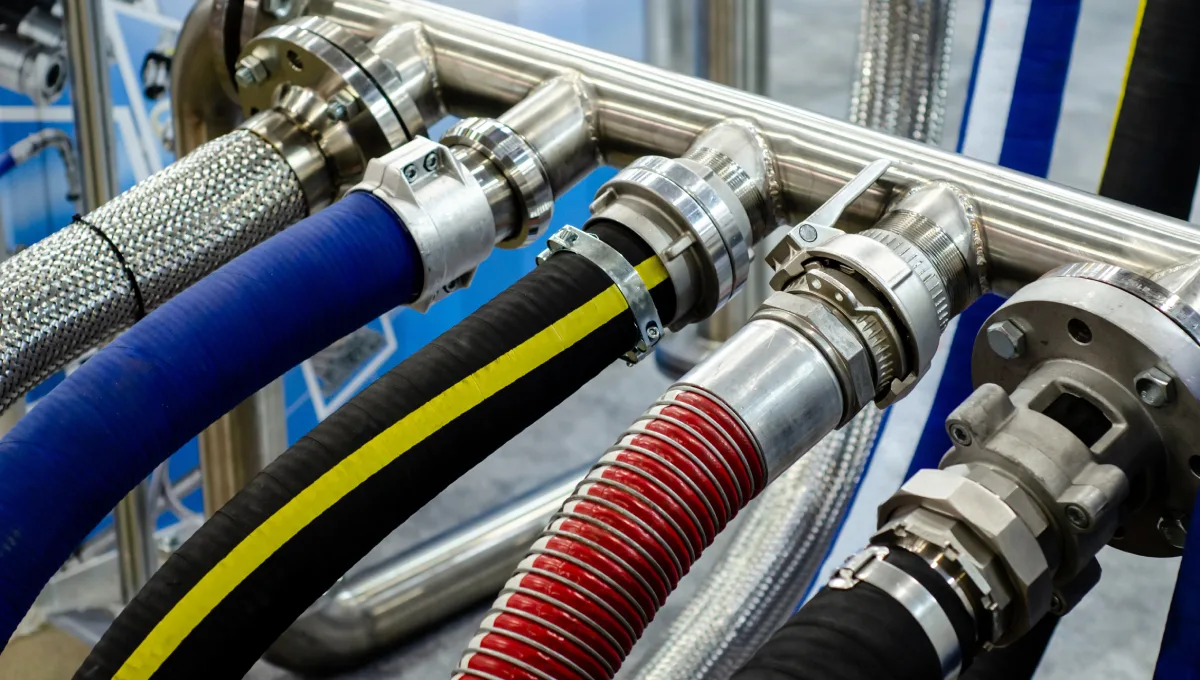

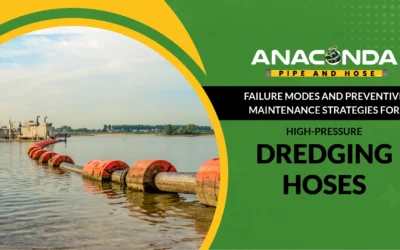
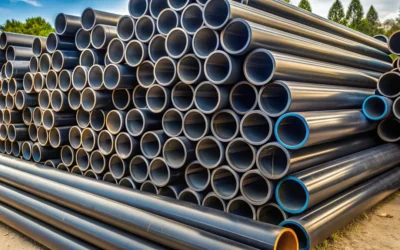

0 Comments